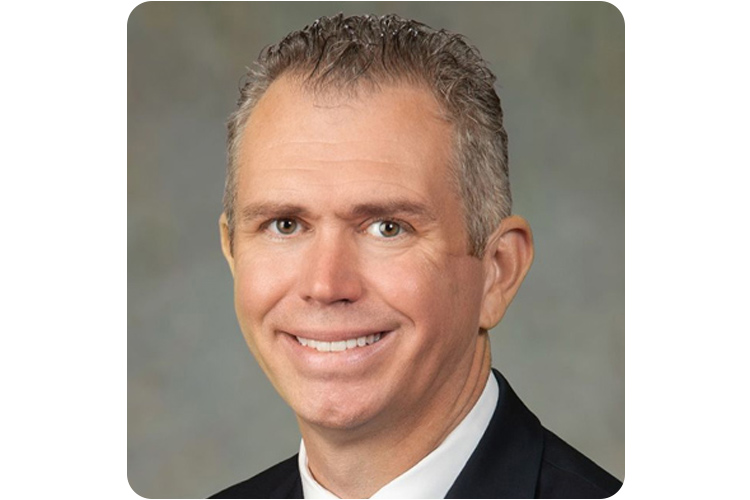Small business succession planning: How to preserve a legacy
Key considerations for a smooth transition
Succession planning is a critical though often overlooked aspect of small business ownership. Whether a franchise, sole proprietorship, partnership, corporation, or family-owned business, the owners need to consider the future and prepare for a smooth transition which is essential to preserve the company's longevity and continued success.
Business succession can take on different forms. From passing the business to the next generation, selling to external buyers, or transitioning leadership to trusted employees, a well-structured plan helps avoid potential disruptions and preserves the legacy of the business.
Building on key factors to a successful transition such as leadership development, financial readiness, and estate planning, small business owners can ensure that what they’ve built continues to thrive for years to come.
Bankers from Regions Small Business Administration Banking (SBA), Banca de franquicias, and Commercial Banking Solutions teams share key considerations for small business owners looking to preserve the future of their businesses.
Small business succession: When to start planning
“The best time to start planning is at least 3-5 years before an expected transition,” said Taylor Franco, Regions SBA Sales Leader for Mid America, Georgia, Alabama and Carolinas. “This allows business owners to maximize business value, strengthen financials, and ensure leadership readiness.”
Early planning provides flexibility whether selling to a third party, transitioning your business to family or employees, or merging with another company. Franco recommends that business owners build relationships with advisors early. Building a strong support team is key to any business. When it comes to developing a succession plan, this can include bankers, accountants, legal counsel, and financial planners to assess options and risks.
One of the first things Franco suggests thinking about as a business owner is ‘Am I building it to be acquired or to pass it to family or a trusted employee – or are we building something to sell after a period of time?’”
According to a study by Nationwide, only 30% of small business owners have a succession plan compared to 62% of mid-market business owners. This can put their future retirement and the future of the business in jeopardy.
Small business succession: Understanding options
When it comes to business succession there is not a one size fits all approach. According to the Small Business Administration, small businesses make up more than 99 percent of businesses in the United States, employing 49.5% of all private sector workers. Around 27% of those small businesses are family-owned.
Franco shares some potential options for small business transitions:
- Internal succession: Passing the business to family members or key employees. Requires leadership development and careful estate planning.
- Third-party sale: Selling to a strategic buyer, private equity firm, or competitor. This often results in the highest valuation but requires positioning the business as an attractive acquisition.
- Employee stock ownership plan (ESOP): Transitioning ownership to employees over time, providing tax merger or strategic partnership.
- Merger: Combining with another business for growth or an exit strategy that keeps the company operational.
- Orderly wind-down: If an outright sale isn't t viable, owners may opt for a structured closure while maximizing asset value.
Franco notes that many partner buyouts or acquisitions are financed via SBA 7(a) loans due to program flexibility supporting the financing of intangible assets and goodwill often associated with these types of transactions. If there are enough hard assets an Préstamo SBA 504 could also be considered, but in general, most financing for a small businesses looking at an owner buyout (outside of seller financing, which can also be included) are done through an SBA credit facility.
Common reasons to use SBA 7(a) loan for business acquisitions:
- Low down payment - Based on the type of acquisition or buy out, equity injection requirements can very; 10% equity is required for full changes of ownership.
- Longer repayment terms – Terms up to 10 years (or blended term up to 25 years if real estate is included), helping reduce monthly payments and improving cash flow.
- Finances goodwill and intangible assets - Unlike many traditional loans, SBA 7(a) financing can cover goodwill and other intangibles, which are common in business purchases and typically present a collateral shortfall.
- Flexible use of funds - Can be used for purchasing an existing business, acquiring assets, working capital, or refinancing seller financing.
- Seller financing can be combined - SBA allows partial seller financing, following certain SBA guidelines, to help meet equity injection requirements or finance acquisition costs greater than $5MM (the maximum SBA 7(a) loan amount).
- Competitive rates – rates may be more competitive compared to alternative financing options.
Franchise businesses may have an added layer of consideration when it comes to a business transition. “With these transitions the franchise agreement may dictate your options. As the agreement may stipulate the brand has first right of refusal for purchase of the unit. An additional layer of due diligence will be performed by the brand on the potential buyer to approve them as a franchisee to the system.” says Patrick Ellis, Regions Senior Franchise Banker. Lastly, the brand may require refresh/remodel updates to the location to ensure the site remains to brand standards.
Small business succession: Prepare for a success
When considering a future business transition, it is important to ensure financial and operational readiness.
“When planning to sell a business as the primary transition plan, we recommend business owners have clean financials with strong reporting and well-documented profitability,” says Franco. “Optimizing processes and reducing owner dependency will make the business more attractive to buyers.”
Another key step in preparation for a business transitions is conducting a business valuation with a professional to understand the company's value. Having a team of outside professionals involved can help guide the process and steps to protect and maximize valuation. This can include a merger and acquisitions advisor, business banker, Certified Public Accountant, and an attorney.
Preparation for a business for sale even when an owner has no interest in selling can be a powerful tool for maximizing a company’s value. The process needed to develop an accurate valuation of a business can uncover ways to maximize the value of a company, regardless of intent.
“There are a lot of deal structure and financing considerations involved in the sale of a small business,” notes Franco, whose team is often involved in the buy-side lending for clients acquiring a business. “It is important to understand deal structures, including seller financing, earnouts, and SBA-backed business acquisition loans.”
Franco recommends working with a banker to explore lending solutions that support buyer financing or ESOPs. She also advises clients to consider working with a wealth management team to ensure personal financial security post-transition. “Having a wealth advisor involved can help manage the liquidity event.”
Regions Wealth Planning Executive, Bryan Koepp, weighs in. “A lot of times there is the assumption that the business owner will liquify and have an investment portfolio and just ride off into the sunset. But it’s important to consider what’s next. Their story doesn’t end with the sale of a business. In many ways, their story is just beginning.”
Small business succession: Common pitfalls to avoid
Firstly, going back to the importance of succession planning – and starting that planning early, one of the most common pitfalls is waiting too long to start planning. This can lead to rushed decisions and lower business valuation.
Secondly, a lack of order in legal and financial documentation for the business can cause delays or lost deals. This is where technology can play a key role. “In certain industries, we see companies ready to pass off the business, but their files are still in cabinets, they may still be using paper documents,” says Franco.
Part of the transition preparation revolves around adapting to the technology. From automating and putting in internal controls and accessible information reporting to streamlining tech and controls to evolve the operation and make it more attractive to potential buyers.
Thirdly, and this harkens back to the recommendation of building a strong team of outside professionals, it is important to be aware of any tax implications of a sale of a business. Overlooking this key factor could significantly impact proceeds from that sale.
“We’ve seen instances where clients don’t talk to their bankers as part of a business transition,” says Koepp. “They primarily talk to their attorney but not their banker who could help in providing insight regarding next steps, potential credit considerations, and ideas to structure a next business opportunity, if applicable. This is a key part of the succession planning process – you need a full team to help handle the contingencies.”
Lastly, ignoring the cultural and leadership transition when a business changes hands can lead to employee or customer instability. It is important to keep the employees aware of plans that could impact the business landscape.
Small business succession: Final thoughts
Business transition planning is a long-term strategy, not a last-minute event. “It is never too early, but it may become too late to develop and implement a transition plan that accounts for potential contingencies a business owner may face,” notes Koepp. “The framing of goals and priorities is the gold standard, not necessarily complexity and cost.”
Understanding your options and early planning are more than just important, they can serve as a powerful influence toward the confidence to move forward. Regions brings a full suite of small business solutions and expertise to tackle succession planning. If you’d like to continue the conversation, reach out to a local, dedicated banker and/or advisor in your market and set yourself on the path to transition success.
Need to get started with wealth planning?
Nuestras guías de administración de patrimonio pueden ayudar a dar el primer paso.
¿Le interesa hablar con un asesor pero no cuenta con uno?
Buscar a un contacto en su área.
Have questions around franchise financing?
Contact our Franchise Banking team.
Looking for more information on Small Business Administration loans?
Contact our SBA Banking Team.

Taylor Franco
Taylor Franco is a financial services leader with over 15 years of experience specializing in SBA commercial, export, and small business lending. As SVP and SBA Sales & Origination Leader for Regions Bank, she oversees SBA lending and strategy across the Mid-America, Georgia/Carolinas, and Alabama/Mississippi districts.
Taylor has a strong track record of leading organizations and teams with expertise in small business operations, sales delivery, and strategic partnerships. Her career includes key leadership roles such as Small Business Market Executive, Sales Director, and Commercial & Small Business Sales Leader, spanning markets across the East Coast and Mid-America.
Looking for more information on Small Business Administration loans? Contact our SBA Banking Team.

Patrick Ellis
Patrick Ellis is the Senior Franchise Banker for Regions Bank, overseeing Franchise Banking opportunities across the Regions Geographic footprint. With over 33 years of financial services experience, Patrick has a deep expertise in the franchise industry. He is a Certified Franchise Executive with demonstrated knowledge of franchise brand development.
Based in Orlando, Florida, Patrick is a recognized leader in the Franchise Banking community.
Have questions around franchise financing? Contact our Franchise Banking team.

Bryan Koepp
Bryan Koepp es ejecutivo de planificación patrimonial del área de Administración del Patrimonio Privado de Regions. Su experiencia incluye planificación de sucesiones comerciales y de fusiones y adquisiciones, además de la planificación avanzada de patrimonios y fideicomisos. Tiene más de 23 años de experiencia en administración patrimonial. Además de haberse recibido de abogado, Bryan tiene acreditación como CERTIFIED FINANCIAL PLANNER™ y como administrador de fideicomisos y patrimonio matriculado por la Society of Trust and Estate Practitioners para planificación internacional.
¿Quiere encontrar un asesor como Bryan? Contacte a un asesor de patrimonio hoy mismo.






